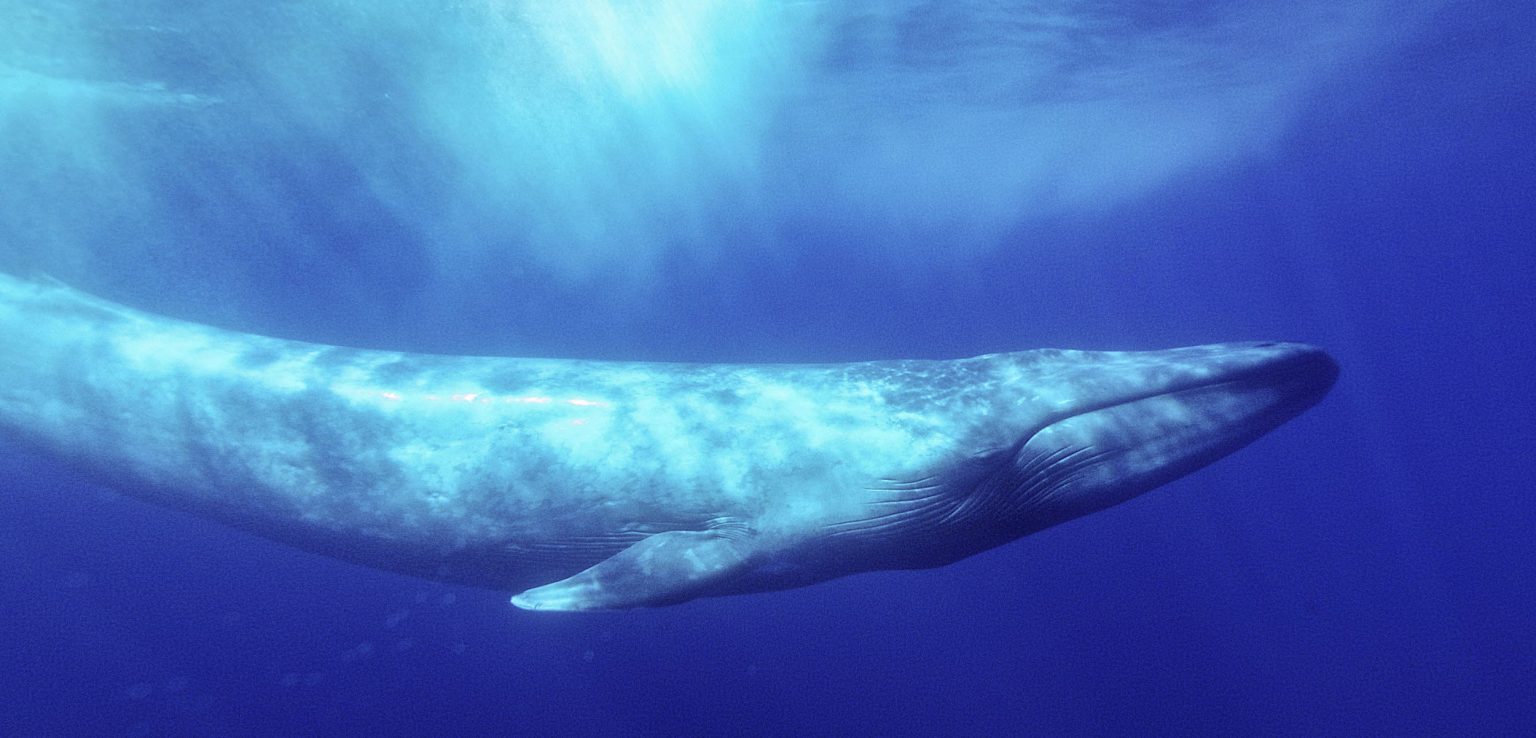The Evasive Behavior of Blue Whales
Observations of a tagged blue whale show that it may have learned to avoid ships.

The blue whale was on a dive and out of sight. Earlier in the day, the team of researchers tracking the animal off the coast of California had attached two tags to its back to track how it responded to sonar, like that used by the military. The morning passed without incident, but as the team waited for the whale to surface, they worried for its safety.....MUCH MORE
As John Calambokidis, a whale biologist with Cascadia Research, steered the team’s research boat behind the marine mammal’s likely path, a marker on a screen tracking ship traffic indicated that the 260-meter Mokihana had moved out of the port at Long Beach, California. The huge container ship was on a potential collision course with the whale, which could be struck within minutes.
The ship came and went, but the whale didn’t appear. A tense minute or two of silence went by before the whale breached the surface and exhaled. It appeared unharmed. The team was relieved. Although it was nerve-racking to be so close to witnessing a whale strike, it was also a serendipitous encounter since the tags’ data could reveal how the whale reacted to the ship.
“At the same point that I was concerned about it, I also knew that this presented a potentially unique opportunity to monitor what we know occurs all the time,” Calambokidis says referring to the frequency of close calls between whales and ships in the region.
Although blue whales are rare globally—their populations are thought to be less than 10 percent of their pre-commercial whaling numbers—they are relatively common off the coast of California, a busy area where ship strikes are a constant concern. In 2018, for instance, there were 10 recorded whale deaths from ship strikes, however it’s estimated that the actual number could be 10 times higher since carcasses are often unrecovered or can’t be definitively linked to a ship strike. Being so large and slow moving, blue whales are at particularly high risk.
When Calambokidis and his team analyzed their data from that day in September 2014, they realized how close the whale had come to colliding with the Mokihana. They published their findings in a recent paper. The tags, which monitored motion and acoustics, revealed that the whale was ascending from its dive at the moment the container ship passed overhead. The whale got within 100 meters of the hull and then suddenly stopped. Acoustic data revealed the noise from the ship peaked around this point. The whale then rolled to its left, changed its heading, and resumed its ascent. The data also showed that the whale never carried out similar maneuvers during the other ascents it made that morning. It only changed course when the ship passed overhead.
By studying photos of the whale, the researchers realized it was an individual well known by the research community. The female, sighted 23 times since 1987, had nearly capsized a small boat a few months prior to the near miss with the container ship. For the researchers, this raised a tantalizing question: having encountered ships before, did this whale learn to avoid them?....